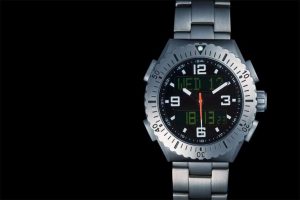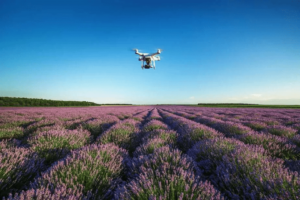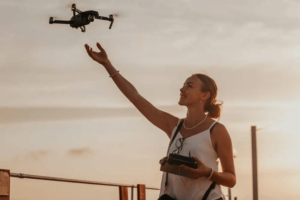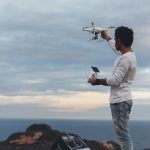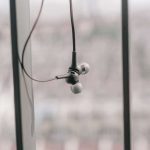By default, you should already have RTFM (Read The Freaking Manual) and know all the safety procedures spelled out by DJI. We are going to cover some critical safety points anyway.
As a commercial drone pilot, you will be flying in many different environments, various places, at odd times, under time constraints, with hundreds of people watching, or sometimes only just you and your observer for miles around. Wherever you are flying, under whatever conditions, you are responsible for everything that happens when your drone is in the air.
That might sound severe and overreaching, but in today’s “fear-the-drone” atmosphere, combined with the few bad eggs flying UAVs into bad situations and the FAA clamping down on hobbyists while eyeing professionals, we all need to be extremely careful.
1. Know Your Environment before Taking Off
Besides weather issues as covered before, there are other things to know. Google Earth is your friend: It is free, and runs on PCs, Macs, and is available as an app on your tablet or smartphone. When you get a new gig in a strange part of town, the county, or even the state, check it out with Google Earth. Even if the image date is stale and more than a year old, it will help you plan the flight. Look for high power lines, cell phone towers, and other obstructions. Make sure you are not near airports, by using the free app called Hover or the website www.mapbox.com/drone/no-fly. The huge five-mile no-fly radius the FAA has put on most airports can blanket some medium-sized cities when airports are within the city limits. Smaller, rural airfields without towers still may have a three mile radius ban, but it is up to you to know about these restricted areas so research before you fly.
Hover App There could be other restrictions for your target area, such as active forest fires resulting in wide-area UAV groundings. There could be city ordinances banning drone flights implicitly, which becomes a show stopper for your UAV project.
1.1 Site security
Check the crime statistics for the area. I have had to fly on the bad side of Houston a few times, and my observer had to double as my bodyguard. Good sources for identifying high-crime areas are www.CrimeMapping.com and www.MyLocalCrime.com, so use them. Being a concealed handgun licensee since 1996, I am always armed during my flights, just in case. Situational awareness is mandatory not only for your airborne UAV but what people on the ground are doing around you. Your observer will be doing double duty in high physical risk areas by keeping an eye on the bird, the gear at the LZ, and your back while the UAV is airborne.
Drones in the air can attract some negative attention. There have been cases where legal drone operations were being conducted and some buzzed dad of a daughter out by the pool thinks the UAV is aerial-gawking at his baby girl; trouble can begin real fast. Do not let hotheads get anywhere near the drone. Keep it out of throwing range, and even shotgun range if necessary. If bad guys come calling, you need to get your bird down quickly and safely, pack up the case and hightail it out of there. Avoid damage to your UAV or even downright theft of it by some punk who thinks he can just run by and swipe it out of the air or off the case as it lands. Come back another time to finish the flight with a more watchful eye (and perhaps a better criminal profiling ability).
2. Shoot-down Avoidance
Over the past couple of years, several nonmilitary, civilian-owned drones have been shot out of the air. Most of the time it was due to the pilot having to fly over personal property to get to another destination. The overflow property owner sees the UAV and takes its mere presence as a violation of his or her privacy rights. Due to previously reported stories of bad drone operators purposely maneuvering UAVs to get aerial photos of girls by the pool and videos through home windows of people changing clothes, many citizens are quite wary of these flying cameras and think them nothing but an invading nuisance.
This has grown into a problem where enraged property owners take vigilante action and resort to dangerous deeds such as using firearms to shoot down drones. This action is against federal law, which forbids any nonmilitary person from shooting down ANY manmade aerial vehicle, whether it is manned or not; this covers all UAVs and drones no matter the size, shape, weight, or type. This means you as the pilot has a right for your drone not to be shot at, but you also have the responsibility not to put your bird in a situation that may brew up a problem. As is said, “an ounce of prevention is worth a pound of cure,” so keep your bird around 200-feet high when you are over potentially hostile territory, especially in rural areas during dove hunting season when nearly every country Bob has his 20-gauge shotgun close by.
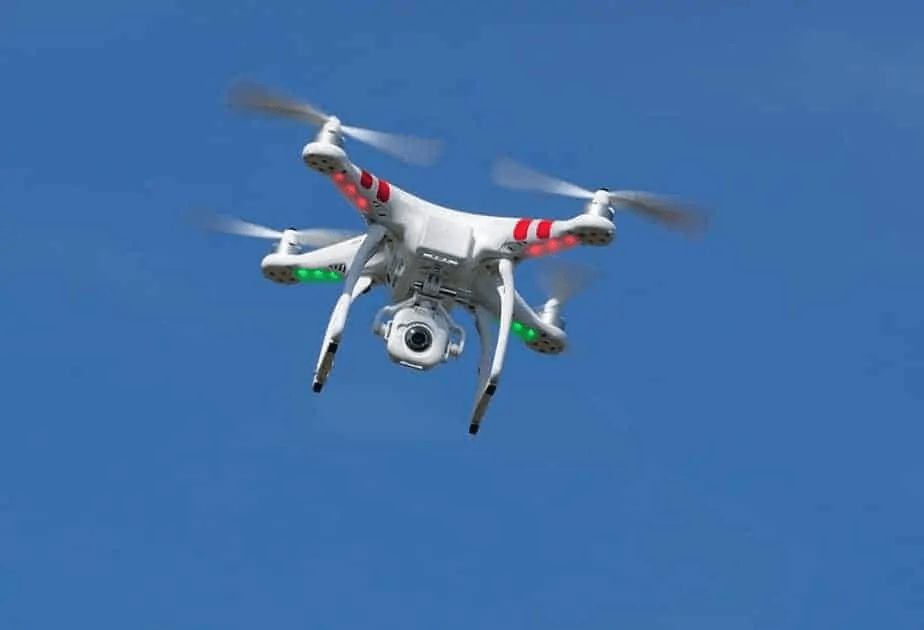
Do not make it tempting for Jimbo to take out a low-flying drone over his 15 acres, just over the next hill south of your land. If you are performing commercial UAV flights for LE (Law Enforcement) and you need to fly in hot zones such as hostage standoffs, SWAT situations, and pot field aerial searches, then you are rolling the dice.
As long as you are above 300 feet, you should be out of shotgun range since even 00 buckshot will lose its momentum after that distance. Handguns will be difficult to have the precision to hit at that altitude, and rifles such as AR-15s and AK-47s would be stressed to strike a hit on your UAV if you are moving horizontally as well as maintaining high altitude. Even if you are limited to 200 feet, sometimes UAV survival and the
safety of people on the ground is worth bending the rules if illegal gunfire is involved. Keep your ears open for anything that even sounds like a gunshot. At the first hint of gunfire, move quickly away from the shot origin.
Then go to maximum altitude, which is probably hard coded in as 400 feet, and haul tail back to the safe LZ. If you are on a drug surveillance flight and you hear a shot, you and your LE buddy have been found. Time to get the guns ready, the bird down, and all of you out of the area very fast. Don’t mess around with cartels. Also on the subject of LE aerial drug operations with your UAV, remove all identifiers prior to flight to protect your identity for obvious reasons. Yes, you may be bending FAA 333 exemption registration rules, but who wants the Zeta Cartel tracking you down from the November number on your Phantom?
3. Simple Onlookers
What we do is a novelty for now, and we must deal with curiosity seekers regularly. Nearly every flight I take in public will see a person. Usually, a guy comes up to me while I have my bird in the air and starts talking to me about the UAV. Sure, you want to be nice and share similar interests by discussing the model and its capabilities, but you are flying right now and cannot be distracted.
When your UAV soars around, things can happen quickly, and bad things happen even faster. You need to keep a hawk’s eye on the drone and its avionic stats, such as battery levels, altitude, and velocity, rather than yapping with a fellow geek about the industry. Politely let the person know you really need to focus on the drone for the next few minutes, and you will be glad to discuss UAVs with them after your bird is safely on the ground.
Ensure the onlooker is not blocking your view to anything that could affect your line of sight with the drone and the LZ. Observers come in handy here; have them intercept gawkers before they make disruptive contact when you are trying to fly.
4. Aerial Dangers
We have covered weather-related threats, but it is worth repeating that you must be vigilant in atmospheric conditional awareness. Watch out for lightning since it is one thing to lose a UAV but worse to lose a pilot.
Flash floods can also be a danger to human life, even after you have secured the bird in its case. Other aerial hazards include birds — real birds with feathers and claws. Some breeds of fowl will attack your drone out of territorialism, fear, or just plain curiosity. No matter what attraction the bird has for your UAV, it can spell disaster if it hits a propeller and takes down your drone. I have had hawks, larks, and mockingbirds take after my Phantom numerous times.
During a trial long-distance flight over my ranch, some large bird attacked my UAV and the propeller killed the bird without the least flight disturbance. I saw a “poof” of feathers, the bird fell to the ground, and my Phantom flew home without a problem other than some blood on the propeller. I drove my Polaris around the drop site for a while to find and try to help the bird, but I never found it. I’m telling this story because it could have been worse in many ways.
The bird could have taken down my UAV, and I would have lost more than $1,000. Another scenario is the mystery bird that disappeared could have been a federally protected bird of prey such as an eagle, a hawk, or an owl, and I may have been subjected to a $10,000 fine from the wildlife feds. For the record, I believe it was a crow that hit my UAV. The point is, you, as the pilot in command, need to watch out for fowl that could wreck your drone or cost you a fortune in federal fines.
5. Rapid Power Loss
We touched on rapid power loss earlier, but this is one of the most important topics in this blog post. Again, if you leave your primary batteries fully charged for over a week without using them, they will swell and seriously internally degrade. So much so, that the next time you fly with the compromised battery, it may go from 50 percent charged to 30 percent to less than 20 percent in less than two minutes. Being over people, water, and trees would be a very bad thing if you lost power completely.
Prevention is the key to avoiding rapid power loss. Fully charged batteries should be drained within two to three days of being charged to 100 percent.
For example, if you charge up on Friday thinking you are flying on Saturday and plans fall through, do not let the batteries fully charge until next weekend. Take them out and discharge them by doing a practice flight and get all the charged batteries below 50 percent.
Recently I had a major gig and had six Phantom batteries charged up for a Monday morning flight, and it started raining Sunday night — for three days! Finally, I caught a break in the rain on Tuesday afternoon so I did six sorties at my ranch lasting ten minutes each. The total time I spent de-charging all six batteries was over an hour and a half with takeoffs, landings, battery swaps, and powerups. To keep from going through this discharge procedure, keep your batteries decharged and remember to charge them up no earlier than 24–48 hours before a flight. Sometimes I will only charge two out of my six batteries if I know for sure that it will be a short flight the next day. That way, I would not have to empty out the four batteries I did not need. This preventative process is a royal pain in the rear, but the alternative is risking losing your bird or worse, it falling out of the sky and hitting a person.
6. Acquire UAV Liability Insurance
Stuff happens. Even when we take every precaution, have the proper licensing, take the required training, and invest in top-shelf UAV equipment, things can go wrong. Since this is a business, you must have liability insurance for your commercial drone’s possible bad outcomes. Whether from rapid power loss, a snapped prop, an engine seize-up, a software glitch, a freak gust of wind, or just a simple human error, UAVs do come down in a negative way sometimes.
Murphy’s Law is always in play, and if your UAV drops and damages another’s property or injures a living being, there will be a price to pay. As a real, commercial drone pilot with either the early FAA 333 exemptions or the hopefully upcoming drone licenses, liability insurance will be a standard requirement for most clients to contract you to perform aerial services with your UAV. It is common sense, also. We have liability insurance on our ground vehicles. Private pilots have been dealing with airplane insurance for more than 100 years.
The same should go for drones since they can fall out of the sky resulting in property damage and serious injury to persons. You can rest assured that slimy personal injury lawyers are salivating to be the first attorney to sue a commercial drone operator. Protect yourself by first setting up a corporation or LLC as we will discuss in further blog posts, but plan on getting liability insurance for your UAV operation before you ever take a dime for your air time. Here are a couple of UAV insurance companies that may underwrite your drone business:
- Costello: www.aviationi.com/DroneQuotes.htm
- Drone Insurance: www.drone-insurance.com

